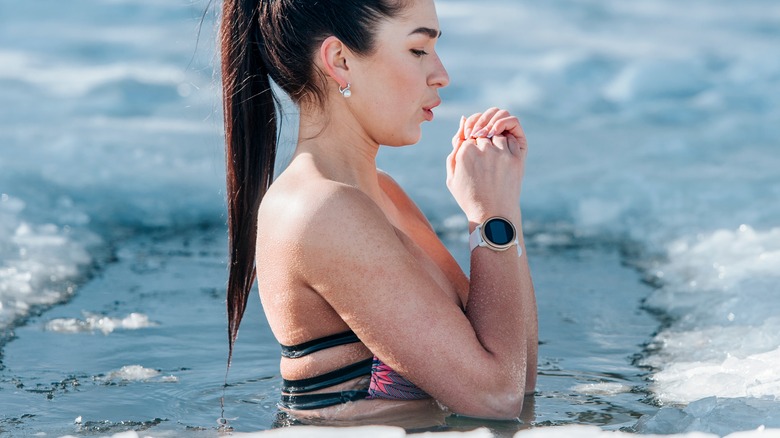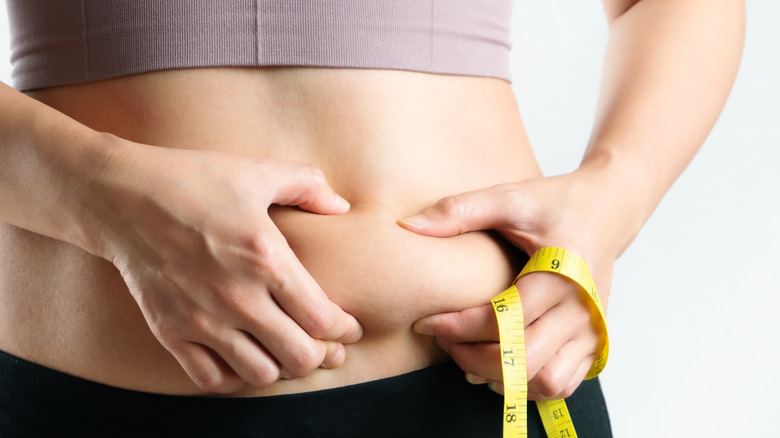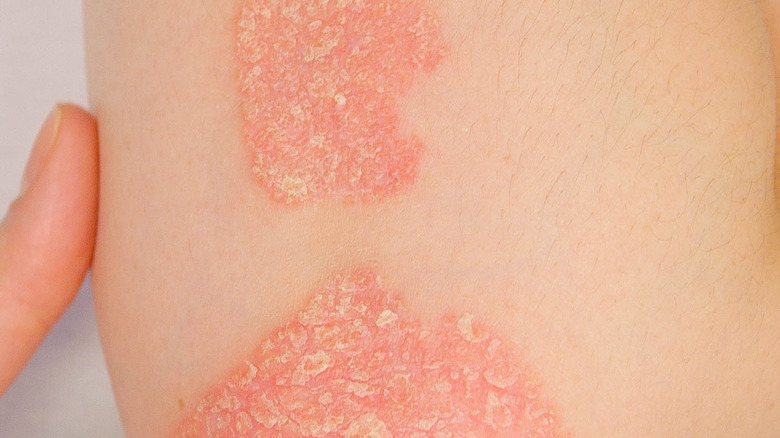Can Cryotherapy Actually Freeze Your Fat Off?
We all have image insecurities, and body fat is a common one. When strict diet plans and high-repetitive exercises don't work, many turn to technology for faster and guaranteed results. Among the most popular fat loss treatments these days is cryotherapy, also known as fat freezing. According to the Cleveland Clinic, this non-surgical procedure can help people shed pounds by exposing them to the freezing cold. The procedure, as explained by Healthline, requires you to stand in a chamber with temperatures as low as -200 degrees F (or -128 degrees C) for about five to 10 minutes.
Treatments for fat freezing target your fat cells and freeze them, resulting in apoptosis, or cell death. The dead cells are then removed from your body through the liver as a result of biological processes, says Illumia Therapeutics. Although no cosmetic procedure is truly pain-free, many people have said that the fat-freezing treatment is tolerable. On top of reducing fat, this whole-body method is purported to have many other medical benefits, such as treating migraines and rheumatoid arthritis, per Healthline.
As magical as this cryotherapy sounds, does it really kill your fat off? If it does, should we expect any side effects? Here's what experts have to say about it.
There is scientific evidence that the cold can kill the fat
Several studies have supported the theory that regular exposure to low temperatures can trigger fat reduction. For instance, daily exposure to temperatures as low as 62.6 degrees F (or 17 degrees C) for two hours a day over six weeks could burn roughly 2% of total body fat, a 2013 study in the Journal of Clinical Investigation found. Long-term cryotherapy, per a 2018 research published in the Journal of Obesity, could generate cold-induced thermogenesis and trigger fat loss as a result.
In a similar way, the idea behind cryotherapy is that the cold triggers the crystallization and disintegration of fat cells. Some hard-to-shift areas commonly targeted for fat-freezing include the underarms, chin, waist, and thighs. Throughout the session, you can read, use your phone, or take a nap as a vacuum draws your fatty tissue into an applicator cup. Because of its convenience, many people opt for cryotherapy as a non-invasive alternative to liposuction.
You won't emerge from the cold chamber with a toned body immediately, though. However, one fat-freezing session can increase your metabolism exponentially and aid in the burning of 500 to 800 calories, The CryoBar claims. For some people, only one session is needed to achieve satisfactory results, which probably show within three weeks after treatment, per Dr. MediSpa.
Nonetheless, the desirable outcome from cryotherapy might not be permanent without a wholesome lifestyle.
Lifestyle changes are recommended, and side effects expected
According to blogger La La Lisette, who used cryotherapy to treat her upper arm fat and saw sterling results, people can't expect to stay slim as long as they eat unhealthily, including eating a lot of fast food. After her sessions, Harrington was told to restrict consumption of carbs for four hours as well as to limit alcohol to prevent the restoration of fat cells. Aside from a good diet, exercising is also recommended to aid with post-treatment fat loss.
As ideal as cryotherapy seems in the treatment of body fat, it is not without side effects. According to MedicineNet, some of the most common and immediate side effects following a fat-freezing procedure include burns, blisters, swelling, frostbite, and rashes. There's also a chance that cryotherapy may leave temporary or permanent scars on the treated skin. Those with diabetes or neurological conditions are advised to avoid cryotherapy.
So far, the effectiveness of cryotherapy remains controversial due to a lack of in-depth research and conclusive findings on this method. It means that, although cryotherapy has proved to be a game-changer in many people's weight loss journey, complications can still arise. As a rule of thumb, consider experimenting with different diets and cardio training first. In case you've decided to try cryotherapy or similar fat loss treatments, consult a specialist for expert advice.


